This article was co-authored by Andrea Rudominer, MD, MPH. Dr. Andrea Rudominer is a board certified Pediatrician and Integrative Medicine Doctor based in the San Francisco Bay Area. Dr. Rudominer has over 15 years of medical care experience and specializes in preventive health care, obesity, adolescent care, ADHD, and culturally competent care. Dr. Rudominer received her MD from the University of California, Davis, and completed a residency at the Lucile Packard Children's Hospital at Stanford University. Dr. Rudominer also has an MPH in Maternal Child Health from the University of California, Berkeley. She is a Member of the American Board of Pediatrics, a Fellow of the American Academy of Pediatrics, a Member and Delegate of the California Medical Association, and a Member of the Santa Clara County Medical Association.
There are 24 references cited in this article, which can be found at the bottom of the page.
wikiHow marks an article as reader-approved once it receives enough positive feedback. In this case, 100% of readers who voted found the article helpful, earning it our reader-approved status.
This article has been viewed 45,180 times.
Asthma, a chronic lung condition, inflames the airways and makes them swell. These inflamed airways then react to triggers, causing the muscles around them to tighten and restrict air flow, resulting in symptoms like tightness of the chest, wheezing, trouble breathing, and coughing. There several alternative methods to managing asthma, from increasing your vitamin intake, to lung strengthening and yoga to natural remedies. Always talk to your doctor before ceasing the use of your asthma medication, or beginning any alternative treatment methods.
Steps
Method 1: Increasing Your Vitamin Intake
-
1Consume food with Vitamin B complex to control your asthma. Vitamin B6 and B12 control the chain of anti-inflammatory agents in the body that lead to a spasm of the windpipes and can prevent asthma attacks.[1]
- Food that is rich in Vitamin B12 include: carrots, bananas, avocado, raspberries, artichoke, cauliflower, soy flour, barley, cereals, pasta, whole grains, wheat barn like rice and wheat germ, dried beans, peas and soybeans.
- Consume vegetarian products that are rich in Vitamin B such as: milk and milk products, green leafy vegetables, legumes, nuts, and whole grain cereals.
- Consume non-vegetarian sources of Vitamin B complex such as: cow’s liver, kidney, pancreas, yeast (Brewer's yeast), lean meat, pork, fish, dairy products, poultry, eggs, shrimp, crab and lobster.
-
2Increase your daily intake of magnesium. Magnesium is known to reduce the deposition of cholesterol plaques in your blood vessels and prevent hypertension. This vitamin also helps to prevent asthma from getting worse as you get older. The daily recommended dose of magnesium for adults is about 300 mg.[2]
- Eat foods that are good sources of magnesium, such as: seafood, nuts, green leafy vegetables, peas, lotus stems, vegetable pulses, whole grains, and fruits.
Advertisement -
3Increase your intake of Vitamin C. Studies have shown having an intake of 2000 micrograms of Vitamin C every day day reduces the histamine levels in the body.[3] Asthmatics can have an asthma attack due to increased levels of histamine in the body, which occurs when they are exposed to an allergen.
- Lemons, citrus fruits, oranges, Indian gooseberries, and bell peppers are loaded with Vitamin C.
-
4Eat food that contains selenium. Selenium is an anti-inflammatory agent and very useful in controlling asthma. Selenium also reduces bronchial inflammation.[4] You need to consume about 50-70 mcg/day of selenium a day.
- Sources of selenium include fish, eggs, mushrooms, cereals, cow's kidney, tuna, lobster, and Brazilian nuts.
-
5Consume food that is high in Omega 3 fatty acids and Vitamin A. Vitamin A and Omega 3 fatty acids both are known anti-inflammatory agents. They reduce the pro-inflammatory agents and thus reduce the spasms that signal an asthma attack.
Method 2: Strengthening Your Lungs with Exercise
-
1Blow a candle from a distance of 1 meter every day for at least 10 minutes. Place a candle 1 meter from where you are seated on a table. Sit across the table and try to blow the candle out with one deep breath. Pushing out all the air in your lungs will increase the breathing capacity of your lungs as well as reduce the volume of the residual air in the lungs. The more the residual volume, the more the lungs are damaged as they cannot exchange air well.[7]
- Once you can blow the candle from a distance of 1m, move it further away from you and repeat the same procedure.
-
2Blow up a balloon each day for at least 10 minutes. This exercise will improve your breathing capacity and increase your total lung volume, as well as decrease the residual volume in your lungs.
- The goal is to exert your lungs and expand them so that they will remain that way and the bronchial tubes will not get constricted too often. This exercise will also reduce the feeling of breathlessness when an asthma attack occurs.
-
3Take up swimming to improve your breathing capacity. Swimming will also help to reduce fatigue and breathlessness. Initially, your lungs may feel tired or worn out but as you continue swimming, your respiratory muscles will become stronger and you will feel more comfortable when you breathe.[8]
- Water also offers lesser resistance to the body and is a great way to improve your lung capacity.
- Start by swimming 15 minutes a day and slowly increase up to 30 minutes or more per day.
-
4Start cycling to improve your breathing. Cycling not only tones your abdomen and calf muscles, it also improves your respiratory system and expands your lung capacity.
- Initially, you may feel breathless biking even a short distance, but the more you bike, the less carbon dioxide remains in your blood, enabling you to cycle for longer periods of time.
- Start by cycling for about 10 minutes and then gradually increase up to 30 minutes or more each day.
-
5Go for brisk walks. Brisk walking in the early part of the day improves breathing capacity of the lungs. This will then reduce the spasms of the bronchial tubes and enhance your breathing.[9]
- A walk early in the morning also helps to stimulate the metabolism and wake it up from the night’s slacked pace. This improves your metabolism, bolsters your circulation and helps clear out allergens and inflammatory substances that tend to accumulate overnight.
- Start with a 10 minute brisk walk or a shorter distance if this is too much for you. Increase the time slowly up to as much as forty minutes a day, at least 5 times a week, to see significant results.
-
6Get a lung function test or Spirometry test to track your improved lung capacity. The lung function tests or Spirometry tests determine your lung’s capacity to comfortably and forcibly breathe air in and out. A small tube is attached to a machine that makes calculations of the air you breathe into the tube.
- You should see drastic improvements in your test results after repeating these exercises for three months.[10]
Method 3: Doing Yoga
-
1Do Pranayama breathing exercises. Yogic asanas (or poses) are associated with deep breathing and physical stances that help expand the lungs. They are immensely beneficial for asthmatics to gain better control over their asthma.[11]
- Sit on the yoga mat with your legs crossed. Place your hands on your knees and make sure your back is straight and erect.
- Breathe in and out deeply five times. Repeat this for 10 minutes every day.
-
2Lay in Shavasana or “corpse pose”. You should be completely relaxed in this pose and feel like you are releasing stress with every breath. It’s not uncommon for people to fall asleep in this pose![12]
- Lie down on your back on the floor or a yoga mat. Spread your legs out and point your toes outward.
- Place your hands outstretched and away from your body. Relax your mind and body by closing your eyes.
- Focus on your breathing and your relaxed body. Practice this asana for five minutes every day.
-
3Practice Matsya Asana or “fish pose”. This pose allows the lungs to be filled with the maximum amount of air.[13]
- Lie down on your back on the floor or a yoga mat. Your legs should be straight and your arms can be placed on either side of your body.
- Keeping the lower portion of your body relaxed and passive, gradually raise your head so the top of your head touches the floor. Your chest will also slowly lift upwards. You may place weight on your elbows to help prop your chest up. Your lungs should be fully expanded with air.
- This posture will stretch your neck and your upper chest as well as your spine. Bending your spine upward will allow for full expansion of your lungs.
- Practice this pose 10 times every day, for four to five breaths.
-
4Stand in Tadasana or “mountain pose”. This is a great beginner yoga pose as it is extremely easy to do and highly beneficial.[14]
- Stand on the yoga mat with your feet spread an inch apart. Stand straight, roll your shoulder blades back, and tuck your lower back towards the ground.
- Raise your arms in the air so that your spine is stretched to its fullest height. Breathe in and out consciously and deeply. This will help expand the lungs to their maximum and help you mentally relax.
- This pose also tones and strengthens your abdominal muscles, which are a key support for heavy respiration and breathing.
- Practice this pose for five to ten minutes (or breathes) a day.
-
5Practice the Anulom Vilom breathing technique. This breathing technique will stimulate your lungs and improve lung performance.
- Sit in a comfortable seated position (legs crossed, or Lotus pose).
- Rest the thumb on your right hand on your right nostril.
- Inhale through the left nostril.
- Hold the breath in for a few seconds.
- Remove your right thumb from the right nostril and exhale. As you exhale, close the left nostril with your middle and ring fingers.
- After exhaling through the right nostril, breathe in through the left nostril and exhale through your right nostril. This completes one round of breathing.
- Do up to ten rounds of breathing like this. As your practice advances, you may do this exercise for about 10 minutes.
Method 4: Using Verified Natural Remedies
-
1Drink one teaspoon of honey in one cup of hot water. Sip it slowly before retiring to bed. You can also drink it in the morning.[15]
- Honey is a natural expectorant and promotes mucus flow. As an analgesic, honey clears mucus and soothes throat irritation by coating your throat. It also helps to remove any phlegm from your throat.
-
2Add a pinch of turmeric to a glass of hot milk and sip it. The cur-cumin may help to clear your throat.[16] It also relieves chest congestion and cures cough.
-
3Drink a solution of cloves twice a day. Take about six cloves and add them to half-a-cup of water and bring it to boil. Filter it and add a teaspoon of honey.[17]
- Properties of cloves help to address various health conditions, including asthma. It is an expectorant too, so it helps to expel excess mucus in your throat.
- Eugenol, an active element in cloves, is an analgesic, which may help to relieve pain.
- You can also use powdered cloves. Add a teaspoon of powdered clove to half-a-cup of water and boil.
-
4Have an apple a day or at least once every two days. Apples are rich in phytochemicals, which help to improve lung capacity. Phytochemicals also regulate inflammatory response. Flavonoid, a phytochemical, protects the lung lining by reducing airway inflammation. Since apple contains quercetin, just like onions and green tea, it helps to treat asthma symptoms related to an allergy.[18]
-
5Eat figs. Soak three to four dried figs in water overnight. Eat the figs on an empty stomach in the morning and drink the water the figs were soaked in. The expectorant properties in figs may help to clear the phlegm in the respiratory tract that can cause wheezing.[19]
- Figs also contain phytochemical compounds which undo the effects of free radicals and prevent the attack of infections and other health conditions. Free radicals in the environment can trigger asthma and hence fighting free radicals becomes essential to cure this condition.
Method 5: Using Unverified Natural Remedies
-
1Drink ginger tea. Take a piece of ginger about an inch long and crush it. Fresh ginger works best for respiratory conditions. Add it to a cup of water and boil. Filter it and drink the tea twice, once in the morning and once in evening.
- Ginger tea reduces inflammation due to asthma. Gingerol, an active component in ginger, helps to clear mucus by warming up the nasal passage. Ginger is also known for its antiviral properties, which helps to treat coughs.
- Avoid using dried ginger if you are having acidic issues as dried ginger may trigger acidic pain.
-
2Make a cinnamon drink. Take ½ teaspoon of powdered cinnamon and add 1 teaspoon of honey to it. Mix well and consume it before going to bed.
- Thanks to its expectorant, antibacterial and anti-inflammatory properties, cinnamon aids in treating various respiratory disorders by expelling mucus and reducing inflammation.
-
3Drink garlic tea once a day to clear lung congestion. Crush 10 cloves of garlic and add it to a cup of water. Boil it and drink it after filtering.
- Owing to its powerful expectorant quality, garlic acts as a wonderful remedy to address respiratory disorders. It promotes mucus expulsion, thereby enhancing breathing capacity. The allicin in garlic also prevents and aids in curing cold and cough.
-
4Drink mint tea. Take a fistful of mint leaves and crush them well. Add crushed leaves to boiling water and simmer it for a few minutes. Drink it twice a day.
- Menthol in mint is a decongestant and thins mucus. It reduces irritation in mucous membrane and cures coughs. Mint also controls inflammation and improves your ability to breathe.
-
5Drink three cups of green tea. Green tea is rich in flavonoid, which helps to treat asthma. It protects your lung lining. It also contains quercetin, which help to reduce allergen symptoms.
-
6Eat basil leaves. Take a fistful of basil leaves and crush them well. Add a teaspoon of honey to them and eat them.
- Basil is a great expectorant. It has antiviral and antibacterial properties, which help to treat coughs. Being an expectorant, it promotes removal of phlegm from bronchial tubes thereby reducing the severity of the symptoms of asthma.
-
7Consume flax seeds. Take ½ a teaspoon of flax seeds and chew them every day.
- As a good source of Omega 3 fatty acids, flax seeds help to reduce wheezing. It also aids in preventing the occurrence of asthmatic symptoms.
-
8Drink gooseberries once a day in the morning. Crush two gooseberries and add a teaspoon of honey to them.
- Gooseberry is a rich source of Vitamin C, which is a great antioxidant. Antioxidants fight free radicals in the lungs and help to improve lung performance.
- The Vitamin A content in gooseberry helps to treat infections in the respiratory tract, thereby addressing asthma. Since Vitamin A stimulates the performance of your immune system, it helps in the prevention and treatment of respiratory problems and other health conditions.
-
9Consume bitter gourd at night before bed. Grind the root of bitter gourd to get 1 teaspoon paste. Add one teaspoon of honey to the paste.
- Bitter gourd is rich in vitamin C, which is a natural antioxidant. It helps to fight free radicals in your lungs and is an effective remedy for asthma. It is also rich in vitamin A, which aids in treating respiratory tract infections.
- The bitter flavor of the vegetable helps to reverse airway cell contraction and aids in treating asthma and other obstructive diseases.
-
10Drink a tablespoon of lemon juice in the morning. Taking lemon juice regularly will help to prevent asthma attacks and wheezing. Lemon treats the clogging of your airways and increases air flow.
-
11Drink onion juice and honey three to four times a day. Mix ½ a tablespoon of onion juice and ½ a tablespoon of honey and consume. Also try to include onion in your regular diet more frequently.
- Onions, a very rich source of flavonoid, is anti-inflammatory, anti-allergenic and antibacterial. Flavonoids protect the lung lining and bronchial tubes.
- Quercetin in onions act as natural antihistamines, thereby reducing allergen symptoms related to asthma. The sulfur present in onion also aids in treating breathing problems.
-
12Consume fenugreek. Add a teaspoon of fenugreek to a cup of water and bring it to boil. Filter it and add a teaspoon of honey and a teaspoon of ginger juice. The combination is a great expectorant and helps to clear your airways.
- Fenugreek is rich in minerals, vitamins and phytonutrients. It gives nourishment to your body and aids in curing coughing, which is a common symptom in asthma.
-
13Drink drumstick leaves soup. Add a bunch of leaves to a glass of water and bring it to boil. Filter it and let it cool. Add ½ a teaspoon of crushed pepper and two drops of lemon juice.
- Drumstick leaves are a rich source of antioxidants owing to their flavonoid content. Flavonoids enhance Vitamin C, which aid in treating cough and cold. They also help in preventing and treating asthma owing to their antioxidant and anti-inflammatory properties.
-
14Drink betel juice. Crush two betel leaves and add it to a cup of water and bring it to boil. Filter it, add powdered pepper to it and consume.
- The medicinal properties of betel leaves help to cure cough. It has antibacterial and expectorant properties. It expels mucus from the air passages and helps to control wheezing.
Method 6: Using External Natural Remedies
-
1Apply dry ginger paste to your face. Make a paste with dry ginger and put it on your face to control facial pain due to asthma. This paste also treats rhinitis.
-
2Add five to six drops of eucalyptus oil to a mug of hot water and inhale the steam. It will help to open up the nasal passages and improve air flow.
-
3Apply camphor and mustard oil to your chest and massage it in gently.Take two to three teaspoons of mustard oil and heat it until it is a comfortable temperature. Add camphor to the oil and mix the solution well before you apply it to your chest.
- Other supplements that may help prevent asthma attacks include zinc, vitamin D, Boswellia, licorice root, meadowsweet, and marshmallow root.[20]
Method 7: Recognizing the Triggers for Asthma
-
1Be aware of the common triggers for asthma. They include:[21]
- Infection of the lungs, bacterial or viral.
- Emotional stress.
- Over strenuous exercise.
- Inhalation of old air.
- Climate changes or shift.
- Allergy to certain drugs.
- Chain smoking.
-
2Keep a journal to trace any patterns between allergic reactions and potential allergens you may have consumed. This will help you recognize and avoid any specific allergies that could also trigger asthma attacks.
- Do your best to minimize allergens in your home once you identify them. Keep windows closed and use the air conditioning during the summer, for instance. In addition, vacuum often, and wash fluffy blankets and stuffed animals in hot water every other day. You can also use an air purifier to eliminate pollens and danders.
- If your pets are a trigger and you don't want to remove them from your home, always wash your hands after you pet them.[22]
-
3If you have a family history of allergies, avoid preparing certain foods for your infant. Do not feed them artificial foods, eggs, cocoa, juices and wheat preparation until they are six months old.[23]
-
4Avoid foods and drinks that are known to trigger allergies. To lessen your chances of an allergic reaction, avoid consuming: eggs, cow's milk, peanuts, soy, wheat, fish, shrimp and other shellfish, salads and fresh fruits, dried fruits or vegetables, potatoes (packaged and some prepared),wine and beer, bottled lime or lemon juice, shrimp (fresh, frozen, or prepared), and pickled foods.[24]
-
5Avoid exposure to dust, strong perfumes, odors, pet fur and animal dander. These can all act as allergens for asthmatics.
Expert Q&A
-
QuestionDo my allergies make my asthma worse?
 Shaun Berger, MDDr. Shaun Berger is a board certified Pediatrician based in the San Diego, California metro area. Dr. Berger provides comprehensive primary care for newborns, children, and adolescents, focusing on preventive medicine. Dr. Berger earned a BA in Psychology from the University of California, San Diego and an MD from the University of Illinois at Chicago. Dr. Berger then completed a residency at the UCSF/Fresno Community Medical Centers/Valley Children’s Hospital where he was elected Chief Resident. He has been awarded the UCSF Foundation Award and is a Fellow of the American Academy of Pediatrics.
Shaun Berger, MDDr. Shaun Berger is a board certified Pediatrician based in the San Diego, California metro area. Dr. Berger provides comprehensive primary care for newborns, children, and adolescents, focusing on preventive medicine. Dr. Berger earned a BA in Psychology from the University of California, San Diego and an MD from the University of Illinois at Chicago. Dr. Berger then completed a residency at the UCSF/Fresno Community Medical Centers/Valley Children’s Hospital where he was elected Chief Resident. He has been awarded the UCSF Foundation Award and is a Fellow of the American Academy of Pediatrics.
Board Certified Pediatrician It depends on what triggers your asthmas, but there can be some crossover. Some common triggers include pet dander and dust, but there are many more.
It depends on what triggers your asthmas, but there can be some crossover. Some common triggers include pet dander and dust, but there are many more. -
QuestionHow can I control my asthma without medicine?
 Andrea Rudominer, MD, MPHDr. Andrea Rudominer is a board certified Pediatrician and Integrative Medicine Doctor based in the San Francisco Bay Area. Dr. Rudominer has over 15 years of medical care experience and specializes in preventive health care, obesity, adolescent care, ADHD, and culturally competent care. Dr. Rudominer received her MD from the University of California, Davis, and completed a residency at the Lucile Packard Children's Hospital at Stanford University. Dr. Rudominer also has an MPH in Maternal Child Health from the University of California, Berkeley. She is a Member of the American Board of Pediatrics, a Fellow of the American Academy of Pediatrics, a Member and Delegate of the California Medical Association, and a Member of the Santa Clara County Medical Association.
Andrea Rudominer, MD, MPHDr. Andrea Rudominer is a board certified Pediatrician and Integrative Medicine Doctor based in the San Francisco Bay Area. Dr. Rudominer has over 15 years of medical care experience and specializes in preventive health care, obesity, adolescent care, ADHD, and culturally competent care. Dr. Rudominer received her MD from the University of California, Davis, and completed a residency at the Lucile Packard Children's Hospital at Stanford University. Dr. Rudominer also has an MPH in Maternal Child Health from the University of California, Berkeley. She is a Member of the American Board of Pediatrics, a Fellow of the American Academy of Pediatrics, a Member and Delegate of the California Medical Association, and a Member of the Santa Clara County Medical Association.
Board Certified Pediatrician & Integrative Medicine Doctor Common allergens can trigger asthma, so do what you can to control them in your house. If anyone smokes in the house, encourage them to quit. Keep your windows closed and use the air conditioning during the summer, and use an air purifier to eliminate pollens and danders. Vacuum often, and wash fluffy blankets and stuffed animals in hot water every other day. Consider removing your carpeting altogether, if possible. Also, if pets are a trigger and you can't remove them from the home, make sure you wash your hands after you pet them.
Common allergens can trigger asthma, so do what you can to control them in your house. If anyone smokes in the house, encourage them to quit. Keep your windows closed and use the air conditioning during the summer, and use an air purifier to eliminate pollens and danders. Vacuum often, and wash fluffy blankets and stuffed animals in hot water every other day. Consider removing your carpeting altogether, if possible. Also, if pets are a trigger and you can't remove them from the home, make sure you wash your hands after you pet them.
Warnings
- During an asthma attack, use your inhaler and talk to your doctor afterward.[26]⧼thumbs_response⧽
References
- ↑ https://wa.kaiserpermanente.org/kbase/topic.jhtml?docId=hn-2928009
- ↑ https://www.nature.com/articles/s41533-019-0116-z
- ↑ http://www.ncbi.nlm.nih.gov/pubmed/23784732
- ↑ http://www.ncbi.nlm.nih.gov/pubmed/23636616#
- ↑ http://www.healthaliciousness.com/articles/food-sources-of-vitamin-A.php
- ↑ Andrea Rudominer, MD, MPH. Board Certified Pediatrician & Integrative Medicine Doctor. Expert Interview. 6 May 2020.
- ↑ https://www.blf.org.uk/support-for-you/breathlessness/how-to-manage-breathlessness
- ↑ https://www.hvvmg.com/breathing-better-with-copd/
- ↑ https://erj.ersjournals.com/content/42/Suppl_57/P3700
- ↑ http://www.ncbi.nlm.nih.gov/pubmed/23846823
- ↑ http://www.yogajournal.com/article/health/asthma-answers/
- ↑ http://www.yogajournal.com/pose/corpse-pose/
- ↑ http://www.yogajournal.com/pose/fish-pose/
- ↑ http://www.yogajournal.com/pose/mountain-pose/
- ↑ http://www.ncbi.nlm.nih.gov/pmc/articles/PMC3609166/
- ↑ http://www.ncbi.nlm.nih.gov/pubmed/18398870
- ↑ http://www.phytojournal.com/vol1Issue1/Issue_may_2012/1.pdf
- ↑ http://www.nutritionj.com/content/3/1/5
- ↑ http://www.ncbi.nlm.nih.gov/pmc/articles/PMC442131/
- ↑ Andrea Rudominer, MD, MPH. Board Certified Pediatrician & Integrative Medicine Doctor. Expert Interview. 6 May 2020.
- ↑ Andrew Harver, Harry Kotses, 2010
- ↑ Andrea Rudominer, MD, MPH. Board Certified Pediatrician & Integrative Medicine Doctor. Expert Interview. 6 May 2020.
- ↑ Custovic, A; Simpson, A, 2012
- ↑ https://www.asthma.org.uk/advice/triggers/food/
- ↑ Andrea Rudominer, MD, MPH. Board Certified Pediatrician & Integrative Medicine Doctor. Expert Interview. 6 May 2020.
- ↑ Andrea Rudominer, MD, MPH. Board Certified Pediatrician & Integrative Medicine Doctor. Expert Interview. 6 May 2020.
- Andrew Harver, Harry Kotses, (2010). Asthma, health and society a public health perspective. New York: Springer. p. 315. ISBN 978-0-387-78285-0.
- Custovic, A; Simpson, A (2012). "The role of inhalant allergens in allergic airways disease". Journal of investigational allergology & clinical immunology : official organ of the International Association of Asthmology (INTERASMA) and Sociedad Latinoamericana de Alergia e Inmunologia 22 (6): 393–401; qiuz follow 401. PMID 23101182.


















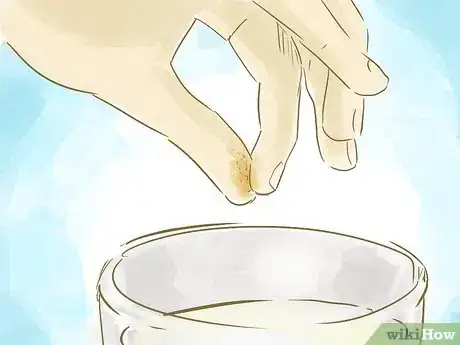


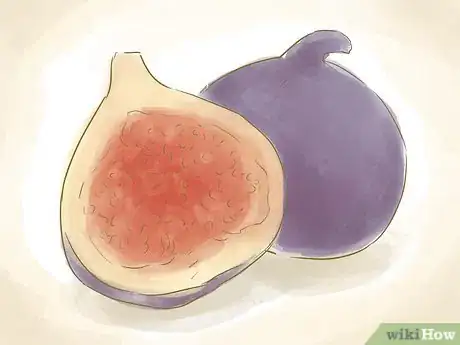
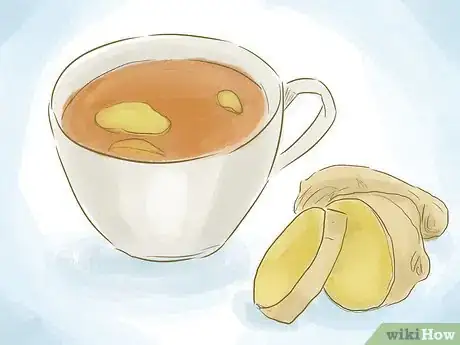
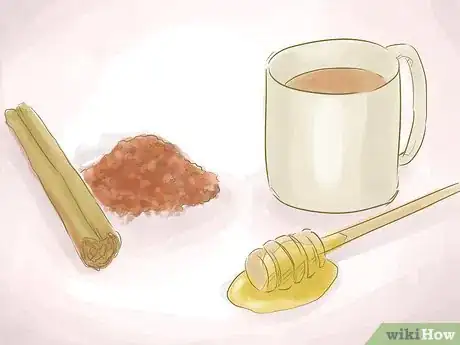




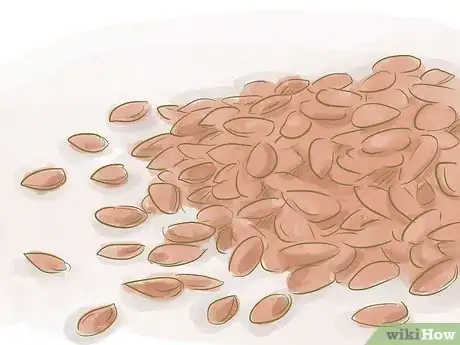




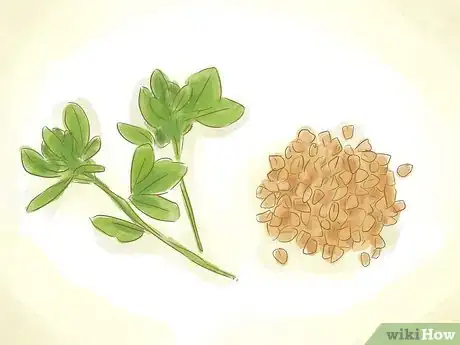


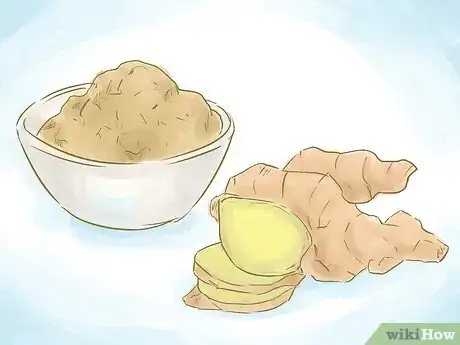


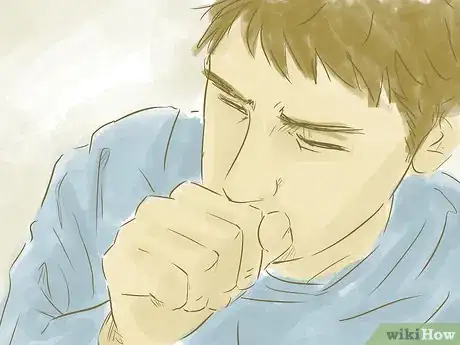

























































Medical Disclaimer
The content of this article is not intended to be a substitute for professional medical advice, examination, diagnosis, or treatment. You should always contact your doctor or other qualified healthcare professional before starting, changing, or stopping any kind of health treatment.
Read More...